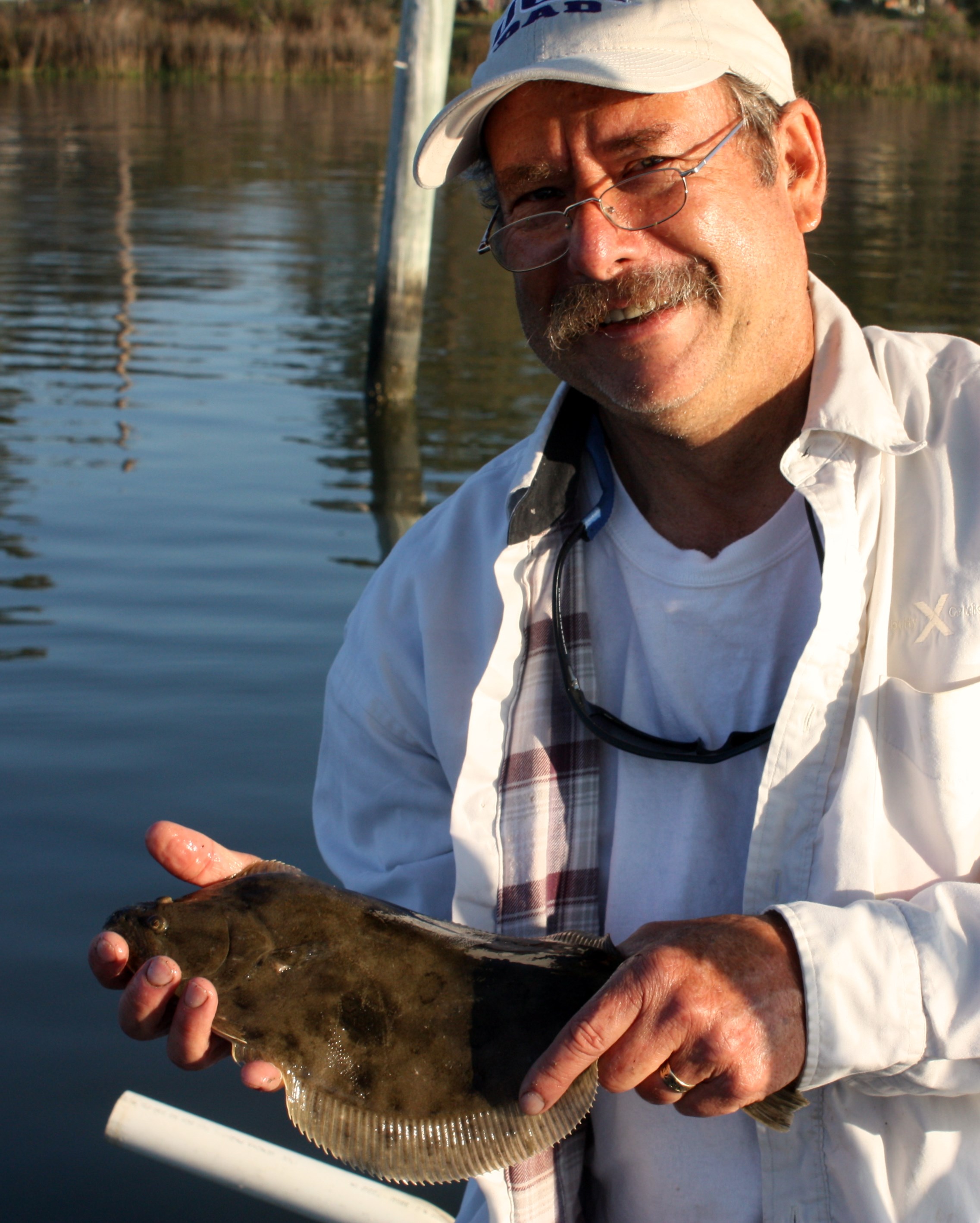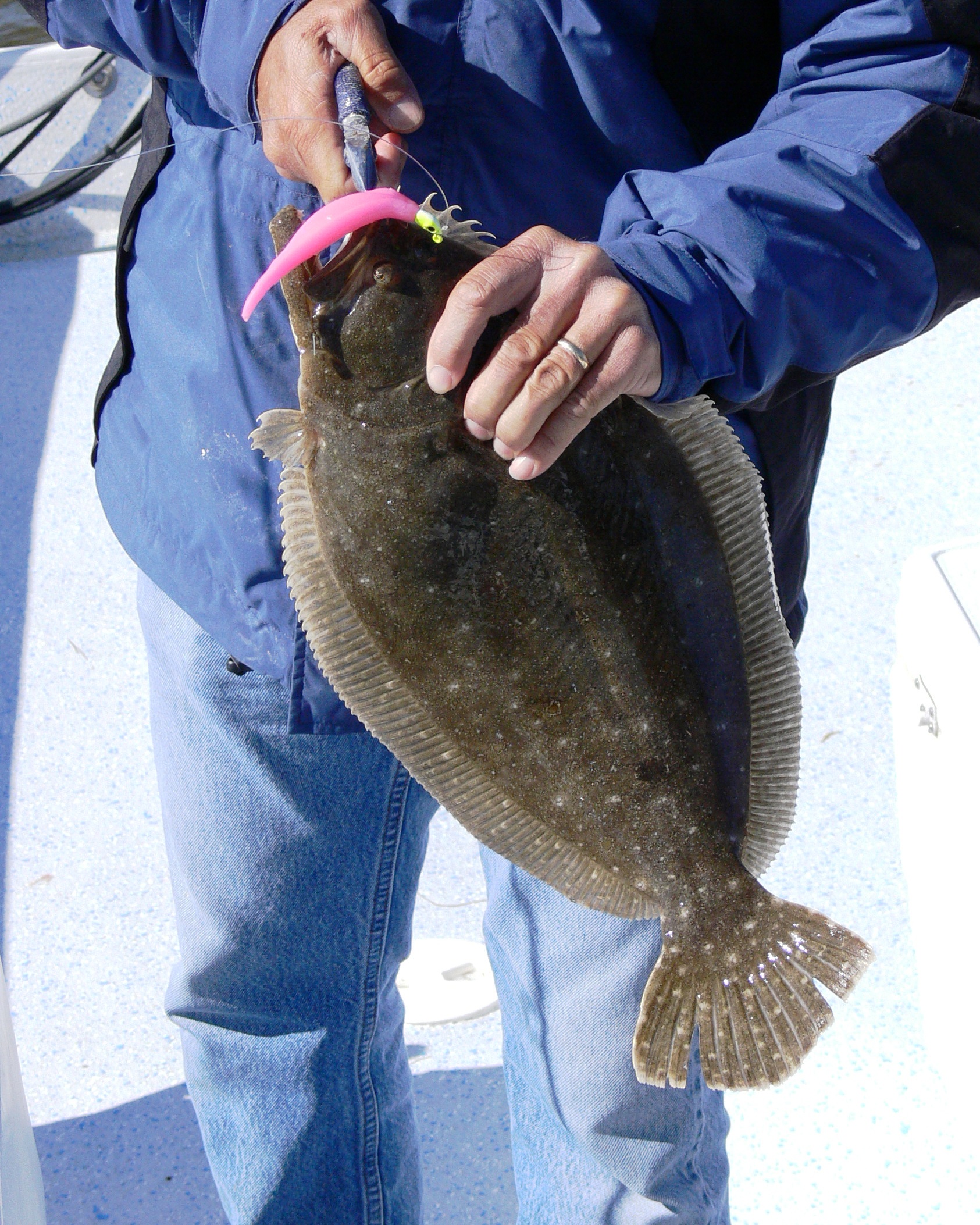Fall flounder fishing is not only exciting, it could also put dinner on the table tonight
I love the cooler and more pleasant weather of October. And the fishing? Well, it is great. Fall on the Gulf Coast is just about as good as any angler can expect, and I can expect a lot from time to time.
Today, I’m drifting along just out from one of the many feeder creeks which empty into Mobile Bay, but I could be fishing in any of the big bays which lie along the Gulf Coast – they all have a special kind of great fall fishing.
I hook up a nice, lively finger mullet on my medium weight and action spinning rig, and I cast the mullet behind the boat where the slow drift of the boat will cover some prime fishing territory.
My slow drift doesn’t last long, though. My rod tip bumps, and then bumps again, and then the rod slowly bends over in a tight bow and strong thrusts of a strong fish. Whatever this fish is, it is strong and it doesn’t want to come to the boat.
What is it? A slot red? Maybe a black drum? But then I see the flat, dark mottled topside of a very good flounder. This flat fish is a good old big one – about three pounds or better, and since I do love to eat flounder, I play this flounder very carefully.
One last strong rush at boat side, and this flounder is ready to come aboard. I slowly slip the landing net under the flounder, and when I lift the flounder, the hook just slips out of the fish’s mouth. This was close- one more pull, and I would have lost my supper.
After I put the flounder in the ice chest, I hook up another finger mullet, and cast out. I’d like to improve my supper prospects with some more fall flounder fishing.

Where to Catch Them
Captain Mike Davis of Orange Beach puts a lot of his clients on great fall flounder fishing, and he says in the fall, the Gulf Coast flounder are moving out of the shallow water bays, creeks and bayous where they’ve spent the warm weather months feeding heavily. The flatfish are moving out to the Gulf where they’ll spend the winter in deeper, warmer water to escape the colder conditions of winter.
“Gulf Coast flounder are moving out of the shallow water bays, creeks and bayous where they’ve spent the warm weather months feeding heavily.”
Captain Mike says that he has good results in fall flounder fishing around the jetties of Perdido Pass, and he especially likes fishing in the channels which lead out of the pass and around the rocks at the entry of the pass.
All the big passes which lead into the Gulf along the coast will fish much the same. Look for solid structure which has good tide movement, and the fall flounder will usually be close.
It is very common for fall flounder to be bunched up in preferred locations. Many times, in fall flounder fishing, anglers can work a long drop off with no results and then find a spot where flounder will be stacked up. Once this super-concentration of flounder is found, work the area hard. Don’t put the boat right over the fish, but stay a short distance away and cast to the fish.
Captain Mike adds that anglers can find good fall flounder fishing just outside the passes. He says,” Sometimes I will fish out in the Gulf off the beach- on the second sandbar- for flounder.”
Drop Offs
Anglers can sometimes find very fast flounder fishing by working the drop offs which run generally parallel to the shoreline along the ICW and other inshore waters.
When fall flounder fishing, flounders will travel down these drop-offs where the water falls from perhaps three feet deep to six feet and more. The flounder will use the drop-offs as ambush points where they will capture prey such as shrimp, minnows, and other smaller stuff.
Anglers who can drift a boat down the drop offs and drag either live bait or artificial lures can gather in a lot of flounder fast. We have seen flounder come on each cast when fishing drop offs in fall.

Walk the Planks
One of our favorite fall flounder fishing techniques is to slowly walk around the edge of a dock or pier as we bump a lure or live bait along the bottom. This is a particularly effective technique at night. An angler can cover a lot of great flounder fishing water by using this slow-motion fishing technique. It’s hard to walk too slowly when doing this kind of dock fishing. Sometimes, the fall flounder will be in surprisingly shallow water at night, so walking anglers need to pull their bait almost up on the sand.
Flounder taking a bait this close to the pilings of the pier can be a challenge- try to get them away from the hard structure as soon as possible.
How to Rig
It doesn’t take heavy tackle for catching flounder in fall as they progress from shallow water into the Gulf. The flounder in fall will generally weigh less than five pounds, so lighter and more sensitive rods work best.
A medium weight spinning or bait casting rod with a good reel to match works well. A seven-foot rod with a 2000 to 3000 series reel loaded with 20 lb. braid line is a good set up. The braided line allows thinner, more sensitive line than equivalent monofilament line, and this can be important when anglers are trying to detect the sometimes very light bite of flounder.
A small black swivel is used to connect the main line to the leader, usually a two-foot long section of either fluorocarbon or mono in 15 lb. weight.
Although “J” hooks are traditionally used, many flounder hunters have very good results with a kahle hook. This funny shaped hook seems to grab into flounder jaws very well, and often the fish hook themselves when they bite.

Live Bait or Fake Stuff?
The classic flounder rig is simple: A 1 oz. slip sinker above an 18-inch fluorocarbon leader with a #1 hook- either a traditional J hook or a kahle hook. Hook up a live finger mullet or even better, a bull minnow. Cast this set up into likely flounder territory and pay attention to the line. It never hurts to let the flounder chew a bit on the bait when it first strikes. Wait until the second or third “tap” of the strike and then set the hook.
For artificial users, it’s hard to beat a 1/8 oz. lead head jig with a soft plastic grub body. Captain Mike Davis says that he really likes a chartreuse colored jig head with a New Penny Gulp body. He fishes this rig in water from 3 feet to 25 feet- it works in all depths.
“If the lure is not hanging up in the bottom structure from time to time, then it’s not being fished right.”
Work the jig right on the bottom. If the lure is not hanging up in the bottom structure from time to time, then it’s not being fished right. Let the jig rest on the bottom, give it a jerk to lift it off the bottom, and then let the jig settle back down. Flounder will eat the jig when it drops back toward the bottom.
Anglers will lose a few jigs fishing this way, but they’ll catch a lot more flounder working the jig in this manner.
Now, here’s a little trick to try that can pay off. When a flounder bite is a little slow, try to catch a sea robin. These big-headed bait stealers are common. When the sea robin is caught, cut a three-inch long, half-inch wide strip of the sea robin’s belly and pin it to the jig hook. This white sea robin belly strip trailer is absolutely deadly on flounder. Work the trailer-equipped jig in the usual fashion and hold on.
If there’s a flounder around, it will find this offering and eat it.
Important Contact Information
Captain Mike Davis
Captain Mile’s Inshore Fishing
251-979-4850




